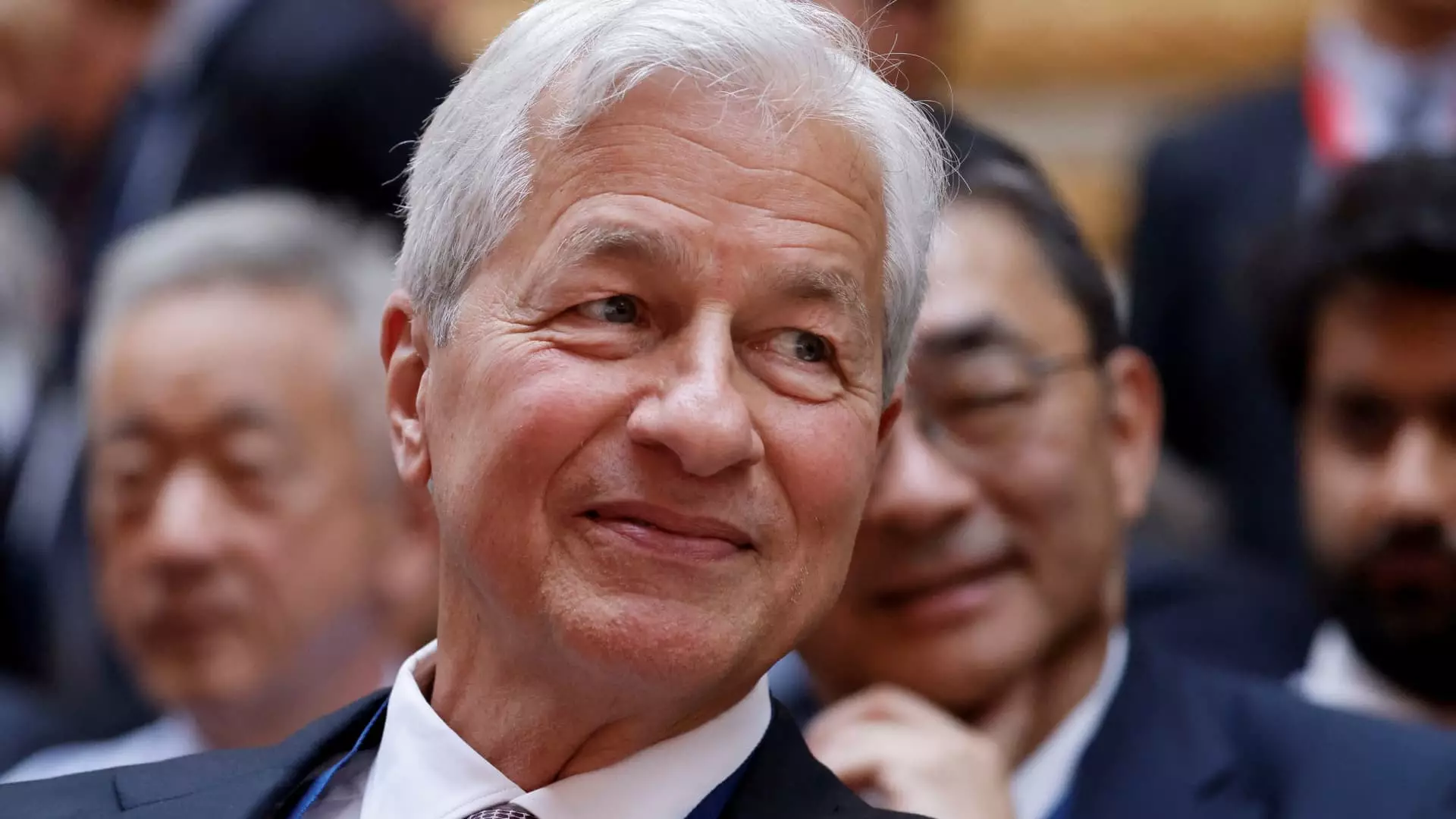The financial landscape is ever-shifting, and in a record year of profitability, JPMorgan Chase finds itself at a crossroads characterized by an abundance of excess capital. With a staggering $35 billion in cash reserves that exceed regulatory requirements, executives are faced with the formidable challenge of determining the best course of action for the bank’s upcoming fiscal maneuvers. The need for strategic decision-making around share buybacks has become increasingly paramount as the bank aims to balance investor expectations while safeguarding against future economic volatility.
JPMorgan Chase has dubbed its situation a “high-class problem,” not solely due to its size but because it underscores the broader implications of capital management in the banking sector. As CFO Jeremy Barnum articulated, the bank’s robust capital generation calls for immediate action if organic investments do not materialize quickly. The growing weight of excess capital is not merely a monetary concern; it represents a strategic crossroads: to hold onto this liquidity as a buffer against economic unpredictability or to redeploy it back into the marketplace through stock buybacks.
Analysts and investors have increasingly demanded clarity on JPMorgan’s strategy regarding this cash reserve. While the financial industry prepares for changes—potentially more lenient than expected—under the incoming administration, pressure mounts to utilize these funds effectively. The scrutiny directed at JPMorgan reflects not only on the bank itself but also illustrates investor anxieties regarding how financial institutions navigate their capital stacks amid regulatory shifts.
In earlier discussions, CEO Jamie Dimon has strongly articulated his stance against aggressive stock buybacks, especially at inflated stock prices. When shares were trading near a peak of $205.88, Dimon’s caution was evident as he labeled further buybacks a “mistake.” Such a viewpoint captures a prudent approach to shareholder value. Rather than succumbing to the immediate temptation of rewarding investors through buybacks, Dimon emphasized the importance of judicious capital expenditure. His comments resonate with the wisdom of employing a long-term vision in financial stewardship, which may serve the company better than short-lived stock price boosts.
Interestingly, despite Dimon’s reservations, JPMorgan’s stock price has appreciated significantly, indicating market confidence in the bank’s operational framework. The contrast between share buybacks and the bank’s valuation illustrates the delicate balance management must maintain to cultivate investor trust while safeguarding the bank’s financial health.
While the immediate future may seem bright, JPMorgan’s leadership has not overlooked potential economic downturns. Dimon and Barnum have repeatedly highlighted the delicate tension between high asset prices and potential economic challenges. Their cautious optimism suggests a commitment to prepare for a range of market scenarios, reflecting an astute awareness of macroeconomic shifts that could impact performance.
In this context, excess cash could prove vital. Analysts like Charles Peabody assert that economic downturns represent fertile ground for gaining market share, as competitors may face constraints during tough times. As JPMorgan positions itself for potential disruption, the bank is likely to adopt a disciplined approach toward capital deployment. It is this pragmatic focus on strategic investments that distinguishes JPMorgan in a landscape often defined by reactive measures.
JPMorgan Chase’s current situation epitomizes the complexities of capital management in modern finance. As executives grapple with both investor expectations and economic forecasts, their choices regarding the utilization of excess capital will reverberate through the bank’s future. Navigating this delicate balance between prudent cash reserves and proactive investment will be critical as they aim to uphold both shareholder value and institutional integrity. The strategic path taken by JPMorgan will ultimately serve as a litmus test for how financial institutions manage excess capital amid unpredictability, setting a potential precedent within the banking sector for years to come.

